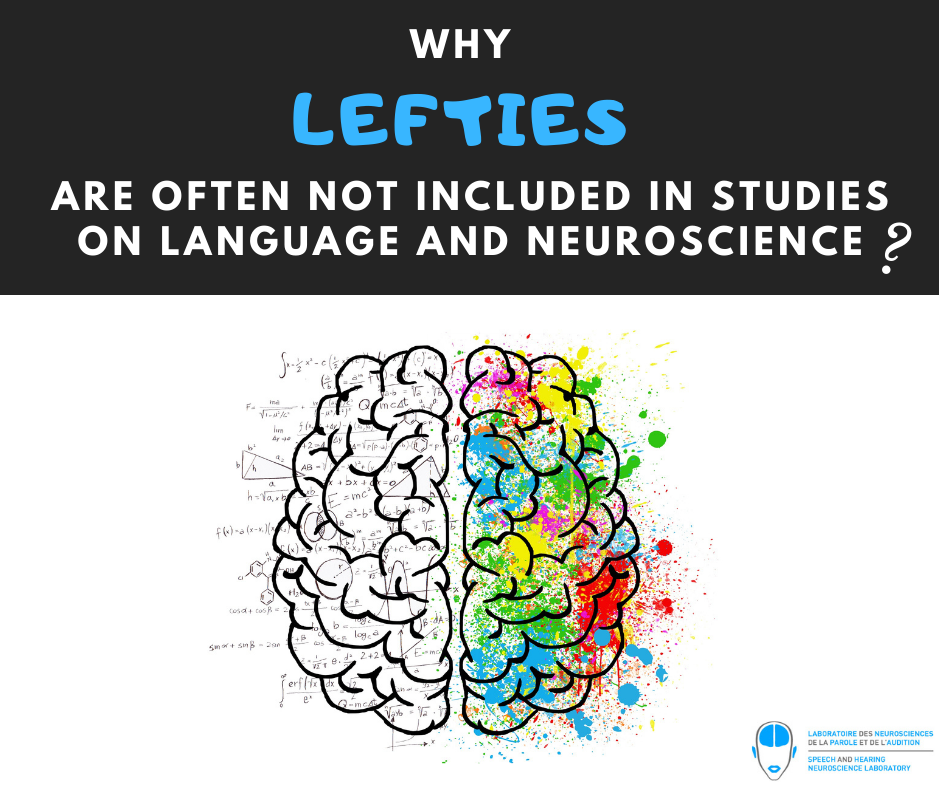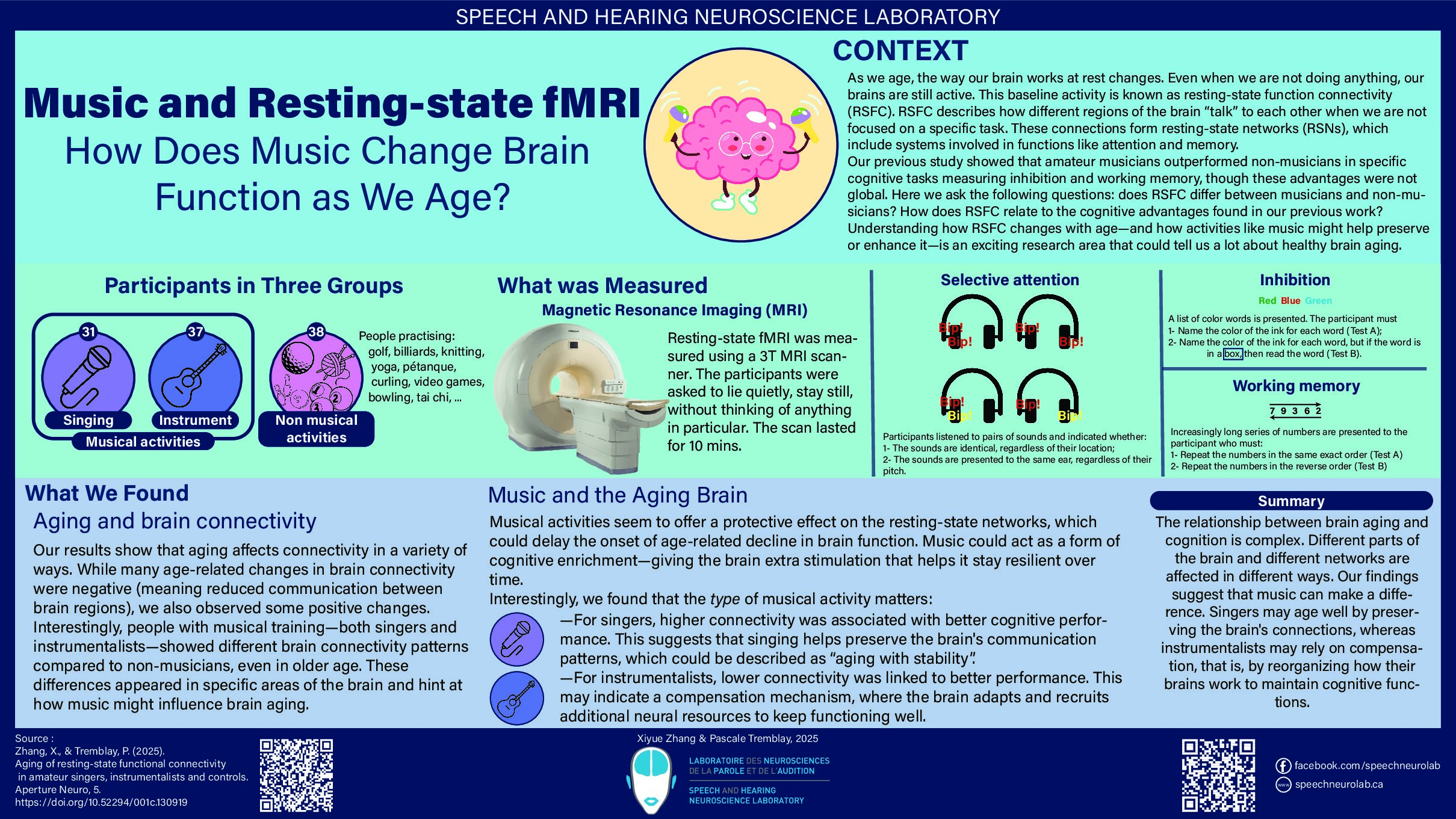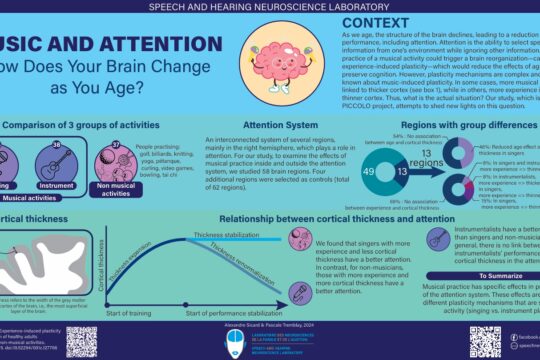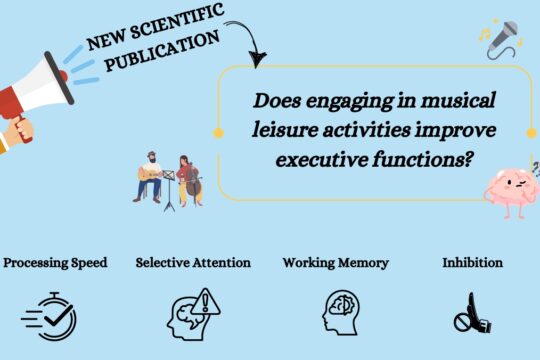
You may have noticed that we often recruit people that are right-handed in our studies.
This can sound surprising—disappointing, even—but it is a criterion common to most if not all studies on language and the brain, as well as the majority of studies on motor control. Why? Because the organization of lefties’ brains is different than that of the majority of the population, i.e., righties (only 1 in 10 people are left-handed).
Where there’s a dominant hand, there’s a dominant cerebral hemisphere.
The brain’s lateralization, which is to say, the importance of the left-right organization in our body, is reflected, for example, in the treatment of nervous information, which crosses over in our spinal cord: the right hemisphere controls the left arm and left leg’s movements, and vice versa. The same goes for the processing of sensory information. The left hemisphere is dominant in right-handed people, while it is the right hemisphere in left-handed people.
Language is different!
Indeed, in almost all righties and the majority of lefties, the left hemisphere is believed to be dominant with respect to language processes. This phenomenon is called a lateralization of functions. For language, this lateralization is relative, meaning that the right hemisphere plays a role in many aspects of language, but in a smaller proportion than the left hemisphere.
What about lefties?
Knecht et al. (2000) demonstrated with a study on 326 healthy adults that this dominance is different. In only 4% of right-handed people, it is the right hemisphere that is dominant, while this proportion increases to 15% in ambidextrous people and 27% in left-handed people. Thus, a left-handed person has a higher chance of having a dominant right hemisphere for language than a right-handed person.
Why does this matter?
This particular organization of lefties’ brains is in no way negative or problematic. It does, however, complicate the interpretation of magnetic resonance imaging (MRI) data and of brain stimulation experiments.
Indeed, if a region of the left hemisphere, for example the planum temporale, is specialized in sound processing for righties, but not for lefties, the anatomy, connectivity and functioning of this region, as studied using MRI, could differ between two participants as a function of their lateralization and introduce a confound in our results. Similarly, when we stimulate a region in a transcranial magnetic stimulation (TMS) study, we must stimulate the same region for all participants. If we have a left-handed participant, with a different pattern of lateralization, stimulation may be ineffective in this person, introducing a confound in our results.
That is why we recruit only right-handed participants for our brain imaging and brain stimulation study.
However, being left-handed is far from being a handicap! Here are a few reading suggestions:
Why do lefties have an advantage in sports? https://www.nytimes.com/2017/11/21/science/lefties-sports-advantage.html
Interesting article on the advantages of lefties in sports (in French) https://www.lapresse.ca/vivre/sante/en-forme/201611/30/01-5046584-lateralite-dans-le-sport-avantage-a-gauche.php
Why are there more righties? (in French) https://naitreetgrandir.com/fr/nouvelles/2017/09/06/20170906-comment-enfants-deviennent-droitiers-gauchers/
Ambidextrous whales? https://www.newscientist.com/article/2153956-whales-switch-from-right-to-left-handed-when-diving-for-food/
Reference:
Knecht, S., Dräger, B., Deppe, M., Bobe, L., Lohmann, H., Flöel, A., Ringelstein, E.B., Henningsen, H. (2000) Handedness and hemispheric language dominance in healthy humans. Brain, 123 Pt 12:2512-8. https://www.ncbi.nlm.nih.gov/pubmed/11099452
Additional readings:



